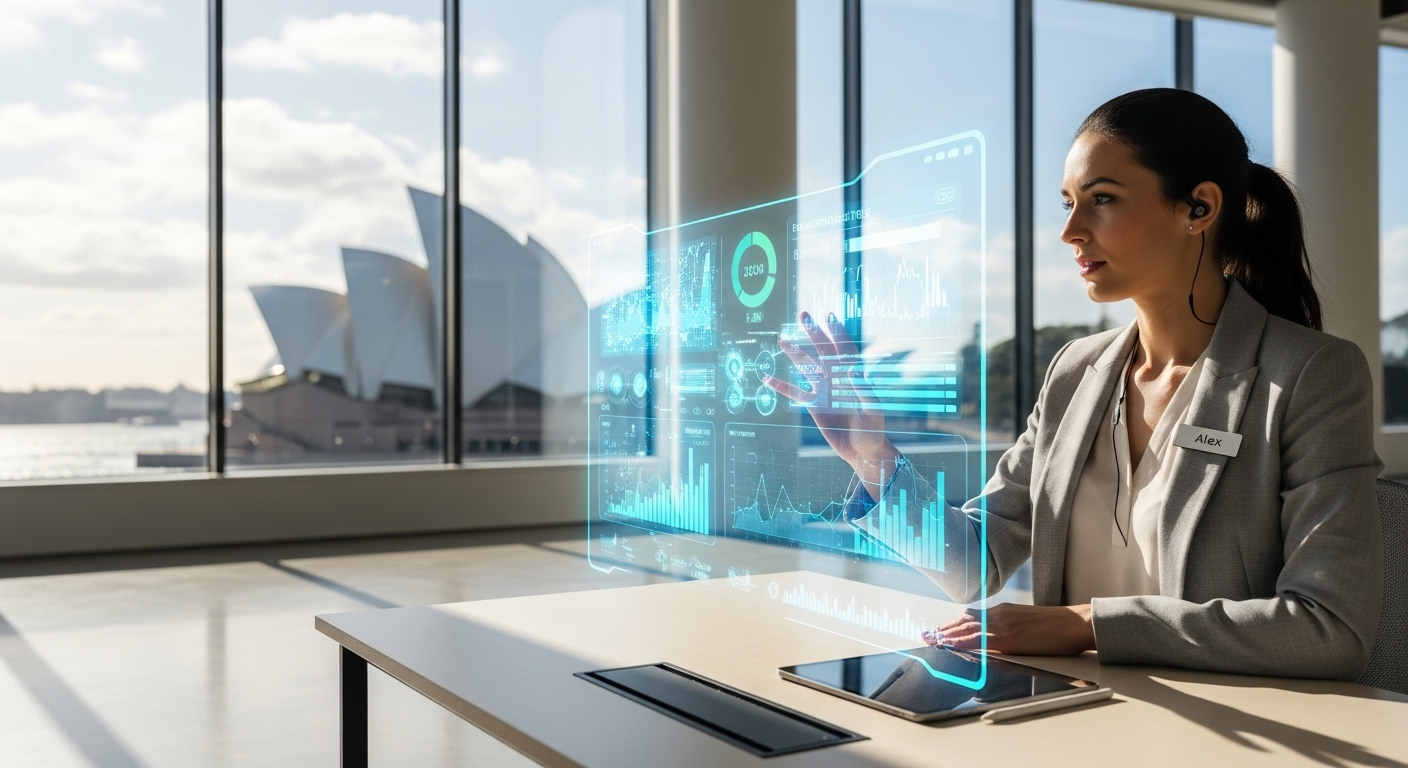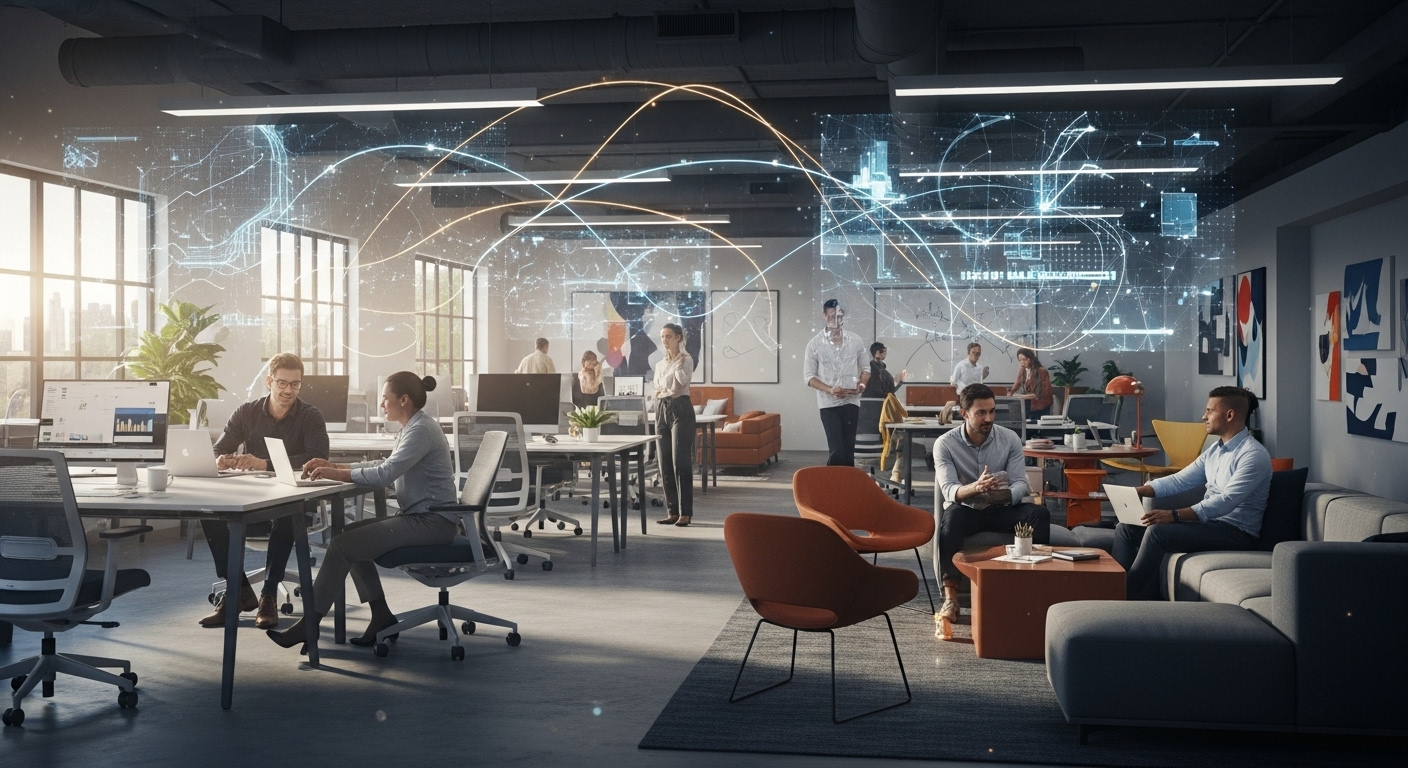In today’s corporate landscape, sustainability is no longer a fringe concept but a core business imperative. Employees, particularly millennials and Gen Z, are actively seeking employers whose values align with their own, and environmental responsibility ranks high on that list. However, many companies stop at superficial gestures—a few recycling bins and potted plants—a practice often derided as ‘greenwashing’. A truly sustainable workspace transcends these token efforts. It represents a holistic integration of design, technology, and culture that prioritizes the well-being of both people and the planet, while simultaneously driving business value. This guide moves beyond the basics to provide a practical framework for creating a genuinely sustainable workplace. We will explore key pillars such as energy efficiency, biophilic design, circular economy principles, and the cultivation of a green culture. By embedding sustainability into the very fabric of your physical environment and daily operations, you can build a resilient, productive, and purpose-driven organization fit for the future of work.
What Defines a Truly Sustainable Workspace?
A truly sustainable workspace operates on the principle of the ‘Triple Bottom Line’: People, Planet, and Profit. It’s an ecosystem where environmental responsibility and human well-being are not afterthoughts but are integral to the business’s success. This approach moves far beyond simply reducing a company’s carbon footprint. For the ‘Planet,’ this means a deep commitment to minimizing environmental impact through intelligent design and resource management. This includes everything from the building’s energy consumption and water usage to the lifecycle of the materials used within it. It involves adopting renewable energy sources, implementing rigorous waste reduction programs that go beyond basic recycling, and choosing materials that are sustainably sourced, non-toxic, and ideally, part of a circular economy. For ‘People,’ sustainability focuses on creating a healthy, equitable, and inspiring environment. This is where concepts like biophilic design—our innate need to connect with nature—come into play, alongside ensuring optimal indoor air quality, natural light, and ergonomic comfort. A sustainable workplace promotes physical and mental well-being, fostering a culture of health and reducing stress. Finally, for ‘Profit,’ the model proves that sustainability is not just a cost center but a value driver. Tangible benefits include lower operational costs from reduced energy and water bills. Intangible, yet equally powerful, benefits include enhanced brand reputation, a stronger ability to attract and retain top talent, increased employee productivity, and greater organizational resilience in the face of changing regulations and consumer expectations. A truly sustainable workspace is therefore a strategic asset that supports long-term growth and stability.
Energy and Emissions: The Foundation of Green Operations
Reducing energy consumption and greenhouse gas emissions is the foundational layer of any sustainable workplace strategy. Buildings are significant contributors to global energy use, making efficiency a primary target for impact. The first step often involves benchmarking performance against established standards like LEED (Leadership in Energy and Environmental Design) or BREEAM (Building Research Establishment Environmental Assessment Method). These frameworks provide a comprehensive roadmap for creating high-performance green buildings. A critical component is upgrading to a smart, energy-efficient lighting system. This means replacing outdated fluorescent bulbs with LEDs, which use up to 75% less energy and last 25 times longer. Pairing them with motion sensors in low-traffic areas and daylight sensors that automatically dim lights near windows ensures electricity is only used when and where it’s needed. Similarly, optimizing the Heating, Ventilation, and Air Conditioning (HVAC) system offers massive savings. Modern, smart HVAC systems with programmable thermostats and zone-based controls prevent the unnecessary heating or cooling of empty rooms. Regular maintenance, proper insulation, and energy-efficient windows that reduce thermal loss are also crucial. For organizations looking to take a bigger leap, investing in on-site renewable energy generation, such as rooftop solar panels, can significantly offset electricity costs and carbon emissions over the long term, creating a more resilient and self-sufficient energy profile.
Biophilic Design: Connecting People with Nature for Enhanced Well-being
Biophilic design is a concept built on the idea that humans have an intrinsic need to connect with nature. Integrating natural elements into the built environment isn’t just about aesthetics; it’s a powerful strategy for enhancing employee well-being and productivity. Studies have consistently shown that workplaces with biophilic elements can reduce stress, improve cognitive function, and boost creativity. The most direct way to implement this is by maximizing exposure to natural light. Ditching high cubicle walls for open-plan layouts, using glass partitions, and strategically placing desks near windows can have a profound impact on employee mood and circadian rhythms. Another key element is the introduction of living nature. This can range from placing numerous potted plants throughout the office to installing a large-scale ‘living wall’ as a central feature. These elements not only connect employees to nature but also actively improve indoor air quality by filtering out pollutants.
A 2014 study by Human Spaces reported that office environments incorporating natural elements like greenery and sunlight saw a 15% increase in reported well-being and a 6% increase in productivity.
The use of natural materials is also central to biophilic design. Swapping out synthetic materials for natural wood floors, stone accents, and wool or cotton textiles creates a warmer, more tactile, and less sterile environment. Finally, creating ‘views of nature’—even if it’s a curated internal garden or a water feature—provides moments of mental restoration, allowing employees to rest their eyes and minds. By thoughtfully weaving these elements into the office design, organizations create a healthier, more engaging, and fundamentally more human-centered workspace.
The Circular Economy in the Office: Rethinking Materials and Waste
Transitioning from a linear ‘take-make-dispose’ model to a circular one is a cornerstone of advanced sustainability in the workplace. This means fundamentally rethinking how we procure, use, and dispose of everything from furniture to office supplies. The goal is to design out waste and pollution, keep products and materials in use for as long as possible, and regenerate natural systems. In practice, this starts with sustainable procurement. When purchasing new office furniture, prioritize items made from recycled, reclaimed, or rapidly renewable materials. Look for certifications like Cradle to Cradle, which assesses a product’s safety to humans and the environment as well as its design for future life cycles. A circular approach also champions refurbishment and repair over replacement. Instead of discarding a worn-out chair, consider reupholstering it. Instead of buying new desks for a redesign, explore modular furniture that can be reconfigured. This not only reduces waste and the consumption of virgin resources but can also be more cost-effective. Comprehensive waste management is another critical component. This goes far beyond a simple recycling bin for paper. A truly circular system includes clearly labeled stations for different waste streams, including compost for organic waste, e-waste for electronics, and specialized recycling for items like batteries and ink cartridges. The ultimate aim is to drastically reduce the amount of waste sent to landfills. This also involves tackling the source of the waste, such as eliminating single-use plastics in the kitchen, promoting a paperless workflow, and choosing suppliers with minimal, recyclable packaging.
Cultivating a Green Culture: Engaging Employees in Sustainability
A beautifully designed sustainable building is only effective if the people inside it are engaged and adopt sustainable behaviors. Physical infrastructure must be supported by a strong, embedded green culture. Without employee buy-in, even the best-laid plans can fall short. Leadership must visibly champion sustainability initiatives, communicating their importance and linking them to the company’s core mission and values. This sets the tone for the entire organization. One of the most effective ways to foster engagement is by establishing a volunteer-based ‘Green Team’ or sustainability committee. This cross-departmental group can spearhead initiatives, run awareness campaigns, and act as ambassadors, ensuring that the sustainability effort is a grassroots movement, not just a top-down mandate. Education is crucial. Many employees may want to be more sustainable but might not know how. Host lunch-and-learn sessions on topics like proper recycling, reducing energy consumption at their desks, or the benefits of biophilic design. Create clear, concise communications—like posters near waste stations or tips in the company newsletter—to reinforce best practices. Incentivizing sustainable behavior can also be highly effective. This could include offering rewards for departments that achieve waste reduction targets, providing subsidies for public transportation, or installing secure bike storage and EV charging stations to encourage greener commutes. Ultimately, the goal is to make sustainability a shared responsibility and a source of collective pride, transforming the workplace into a community actively working toward a common good.
The ROI of Sustainability: Measuring the Tangible and Intangible Benefits
While the ethical case for sustainability is clear, a compelling business case is essential for securing investment and long-term commitment. The Return on Investment (ROI) of a sustainable workspace manifests in both tangible, easily quantifiable financial returns and powerful, intangible benefits. On the tangible side, the most direct returns come from operational efficiencies. Energy-efficient lighting, smart HVAC systems, and water-conserving fixtures lead to significantly lower utility bills, often providing a clear payback period for the initial investment. Similarly, circular economy practices, like refurbishing furniture and reducing waste, cut down on procurement and disposal costs. On the intangible side, the value is equally, if not more, significant. In a competitive labor market, a demonstrable commitment to sustainability is a major differentiator. It strengthens the employer brand, making the company more attractive to top talent, especially younger generations who prioritize purpose-driven work. This leads to lower recruitment costs and higher employee retention rates.
According to a 2021 Deloitte survey, nearly half of Gen Z and millennials said they have made career choices based on their personal ethics, including environmental concerns.
Furthermore, a healthy, biophilic environment directly impacts the bottom line through increased productivity, creativity, and reduced absenteeism. Employees who feel good in their workspace are more engaged and effective. This enhanced well-being translates into better work output and innovation. Finally, a strong sustainability posture mitigates risk and enhances brand reputation, building trust with customers, investors, and the wider community. When viewed holistically, the investment in a sustainable workspace is not an expense but a strategic imperative that builds a more resilient, reputable, and profitable business for the future.
Conclusion
Creating a truly sustainable workspace is a journey, not a destination. It requires moving beyond the superficial and embracing a deep, systemic approach that interweaves environmental stewardship with human-centric design and smart business strategy. As we have explored, the core pillars—from foundational energy efficiency and the regenerative principles of the circular economy to the wellness-boosting power of biophilic design—are not isolated initiatives. They are interconnected components of a single, cohesive ecosystem. When supported by a vibrant green culture where every employee feels empowered to contribute, the physical space transforms into a living embodiment of the organization’s values. The benefits are clear and compelling. Sustainable workspaces reduce operational costs, mitigate risks, and future-proof the business against evolving regulations. More importantly, they become powerful magnets for talent, fostering environments where people are healthier, happier, and more productive. In the new era of work, sustainability is the ultimate competitive advantage. It is an investment in our people, our planet, and our collective future, proving that what is good for the world is also good for business.





